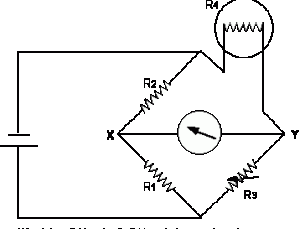Definition: A thermometer is a device that measures temperature. When we touch something we either feel hot or cold or we may not feel anything at all. This relative feeling is a qualitative measurement which can tell whether the body is warm or cold. But this type of observation can not tell how much hot or how much cold it is. Hence, in order to get a quantitative value of temperature we must be able to measure it and get a number corresponding to the degree of hotness or coldness. A thermometer helps us measure this quantity called temperature.
Temperature is that property of a system which can tell whether the system is in thermal equilibrium with another system or not. It is also the degree of hotness or coldness of a body.Thermometric Property: Change in temperature of any material is associated with change in its other properties such as Pressure, Volume, Density, Electrical resistance, color, etc.These properties which exhibit a known relationship to the change in temperature are known as thermometric properties. Thermometric properties are important because temperature is intangible but the related thermometric properties are tangible in nature. We can not see temperature but we can see its volume and color changing, we can see the pressure rising, we can see it becoming denser or lighter than another reference material. So, we can use the change in volume to correlate the change in temperature and by quantifying the volume change we can quantify temperature. How it works: A thermometer has two basic components, viz. (i) Temperature sensor (ii) Read out scale The temperature sensor is made up of a material that is capable of showing any change in thermometric property. For example: in the household thermometer generally mercury is used which expands w.r.t. the amount of heating done. The readout scale is obtained as follows. First the thermometric property is let to change over a known temperature range(ice point to steam point). Then the change in thermometric property and the temperature range are correlated so that a relationship can be established. Any unknown temperature can be found out by putting the value of change in the thermometric property in the relationship. Types of thermometers:Thermometers differ by their operating principle and the thermometric property being considered. The following is a list of various types of thermometers used. The thermometric property for each type is given in the bracket.
- Liquid-in-glass thermometer (Volume/length)
- Gas thermometer (Volume)
- Differential expanding bi-metallic thermometer (length)
- Thermocouple (E.M.F.)
- Electrical resistance thermometer (Resistance)
- Optical pyrometer (Color)
- Difference in density thermometer (Specific gravity)
All the above mentioned types of thermometers are different in terms of operation and construction. But the calibration of each type is similar.Electrical resistance thermometer:Qn: A platinum resistance thermometer reads a resistance of 6.4 Ω at 0 °C and 7.8 Ω at 100 °C. Calculate the temperature when the resistance is 7.0 Ω.Ans: The temperature-resistance relationship for platinum resistance type thermometer is given byR=Ro (1 + At)By putting the values at 0 °C we get6.4 = Ro (1 + A x 0) = R0 ( 1+ 0) = Ro⇒ Ro = 6.4 ΩNow putting the values at 100 °C we get7.8 = 6.4 ( 1 + A x 100)⇒ 7.8 / 6.4 = 1 + A x 100⇒ (7.8 / 6.4) – 1 = A x 100⇒ A = ((7.8 / 6.4) -1)/100⇒ A = 0.0021875For a resistance value of 7.0 Ω we get the relation ship as7.0 = 6.4 (1 + 0.0021875 x t)⇒ t = ((7.0/6.4)-1)/0.0021875 = 42.857 °CThermocouple:In a thermocouple two different metals are formed in a junction. One end is embedded in a liquid of known temperature (usually ice) and the other is placed at a point whose temperature is to be measured. The difference in temperature causes a potential difference across the ends as per Seebeck effect. This EMF generated is correlated with the thermal gradient present and calculation is done from the relationship to obtain a value.Thermoelectric effect or Seebeck effect is the conversion of temperature difference into electric potential difference. This effect is observed in thermoelectric materials when there is difference in temperature at their ends. The energy gradient caused a thermal current to set in through the material and thereby induces an electric potential.Qn: A thermocouple connected to a millivoltmeter gives EMF at t °C as : ε = 0.36 t – 0.00048 t² mV. If the thermocouple-millivolt meter combine is found to be correctly calibrated at 0 °C and 100 °C, find the temperature measured by the thermocouple when a gas thermometer reads 70 °C.Ans:The emf value at 0 °C :ε = 0.36 x 0 – 0.00048 x 0²= 0 mVThe emf value at 100 °C :ε = 0.36 x 100 – 0.00048 x 100²= 31.2 mVDifference in voltage = (31.2-0) mVDifference in temperature = (100-0) °CRate of change = 100/31.2EMF read by thermocouple at 70°C isε = 0.36 x 70 – 0.00048 x 70²= 22.848 mVHence, the voltage indicated ist = (100/31.2) x 22.848 °C= 73.23 °C.
